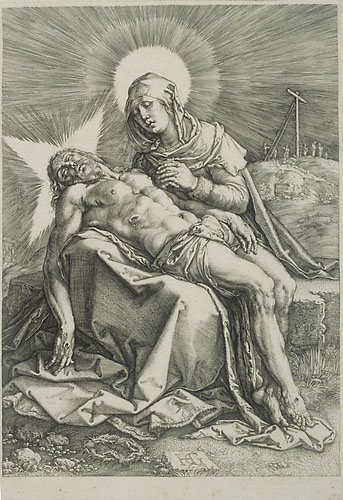|
Hendrick Goltzius
Dutch, 1558-1617
Pieta,
1596
Engraving on laid paper
Museum purchase
1988.28
For Goltzius as for Picasso, virtuosity was the expression of incomparable power. Goltzius gloried in being called a Proteus of changing shapes; and in this print his style reflects the incisive mighty piety of Durer's style. The ever-youthful Virgin mourns over the adult body of her Son, his cruciform halo against her blazing sun-like or star-like halo. Birth and death meet on her prophetic lap. She is enthroned with her dead hero/king. But nothing is more powerful than the humility and tears of the Virgin. Her infinite sorrow amounts to infinite power. The power of woe is ultimately the power of life. Her Son will deny Her nothing. As Christine de Pizan points out: ". . .many women, as well as others for whom they pray, are saved by the tears of their devotion. Moreover, Since God chose His spouse from among women. . .men should refrain from reproaching women. . . . Mary's sorrow turns to joy as she becomes the consort of her Son, in Heaven, and Christine has her say: . . .for I am and will always be the head of the feminine sex." One should also note that Goltzius has become more Italianate in some ways in this print, which reflects Michelangelo's own Pieta.
